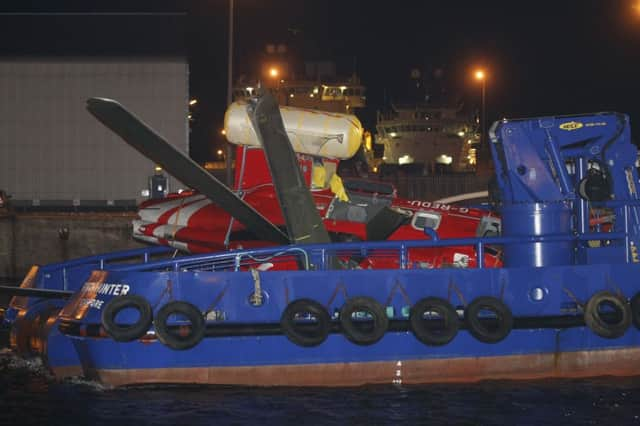Super Puma helicopter passed as safe before crash


The helicopter plunged into the water off the Aberdeenshire coast while returning from the BP Miller platform in 2009.
A fatal accident inquiry is being held before a sheriff in Aberdeen almost five years after the accident.
Advertisement
Hide AdAdvertisement
Hide AdFourteen oil workers and two crew were killed when the aircraft hit the sea on 1 April.
Many of them worked for KCA Deutag Drilling and were returning from BP’s Miller platform when the crash happened.
An investigation into the crash has found that the aircraft suffered a “catastrophic failure” of its main rotor gearbox.
James Gilmour, former engineering director at Bond Offshore Helicopters, gave evidence on the third day of the inquiry before Sheriff Principal Derek Pyle.
Technical logs for the helicopter were shown to the inquiry demonstrating that licensed engineers carried out scheduled maintenance the day before the fatal accident.
This included inspections of both engines and the personal locator beacons on the helicopter. After-flight inspections were also carried out that day, the inquiry was told.
Mr Gilmour, who now works as an aviation consultant, said: “There were no defects during the flights for that day.”
Referring to the technical record of the work completed by the engineers, he said: “It has been signed off at the bottom saying the aircraft is fit for service.”
Advertisement
Hide AdAdvertisement
Hide AdMr Gilmour told the inquiry there was an additional recurrent inspection (ARI) put in place for the helicopter gearbox on 25 March after the aircraft’s chip detector picked up a magnetic particle.
The ARI ordered that the magnetic chip plugs of the gearbox be inspected at every shutdown of the aircraft for the next 25 flight hours.
The checks were carried out and signed off, according to documents shown to the inquiry.
“Nothing was found during all these inspections,” Mr Gilmour said. “There were no chips found and the ARI was closed.”
Fiscal depute Geoffrey Main, for the Crown, asked if Mr Gilmour was aware of the ARI at the time.
He said: “No, this is day-to-day work carried out in the hangar. I don’t get involved down to that level.”
He said he was not made aware of the discovery of the particle on 25 March until after the crash.
Mr Gilmour said he would not necessarily expect to have been told about the particle, stating it was “not that uncommon”.
The inquiry at the Town House in Aberdeen is expected to last about six weeks.